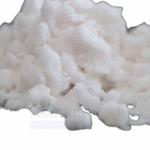
Bar Breaking Apparatus
$ 30.24 Original price was: $ 30.24.$ 30.19Current price is: $ 30.19.

Manganous Dihydrogen Phosphate Extra Pure
$ 16.75 Original price was: $ 16.75.$ 16.67Current price is: $ 16.67.
Desmocol
Whatsapp Order
Desmocol is a trade name for Cocamido Propyl Betaine (CAPB), a mild amphoteric surfactant derived from coconut oil and dimethylaminopropylamine. It is widely used in personal care and cleaning formulations due to its excellent foaming, thickening, and conditioning properties. Desmocol is known for its skin-friendly nature, compatibility with a broad range of surfactants, and ability to reduce irritation potential in formulations. It appears as a viscous, amber-colored liquid or paste with a characteristic mild coconut odor.
Description
Table of Contents
Toggle
Desmocol
Primary Uses
- Personal Care & Cosmetics
- Used as a foam booster and stabilizer in shampoos, body washes, facial cleansers, and bubble baths.
- Acts as a mild surfactant providing gentle cleansing suitable for sensitive skin and baby products.
- Functions as a viscosity builder to thicken liquid personal care products and improve texture.
- Provides skin conditioning and anti-static effects in hair care formulations.
- Commonly included in shaving creams and gels for enhanced foam and glide.
- Household & Industrial Cleaning
- Used in liquid hand soaps and dishwashing detergents as a mild, effective cleansing agent.
- Incorporated in surface cleaners and hard-surface cleaners to improve foaming and grease removal.
- Acts as a co-surfactant in formulations for improved performance and reduced skin irritation.
- Used in car wash shampoos and industrial cleaning agents due to biodegradability and cleaning efficacy.
Secondary Uses
- Textile Industry
- Employed as a wetting and dispersing agent in textile processing and finishing.
- Agriculture
- Used in some agrochemical formulations as a surfactant and emulsifier to improve spread and penetration.
- Pharmaceutical and Veterinary Products
- Occasionally utilized as a surfactant base in topical pharmaceutical creams and ointments to aid dispersion of actives.
KEY PRODUCT FEATURES
1. Basic Identification Attributes
- Chemical Name (IUPAC): 3-(N,N-Dimethylmyristylammonio)propane-1-sulfonate
- Trade Name: Desmocol (Cocamidopropyl Betaine)
- CAS Number: 61789-40-0
- HS Code: 3402.19.90
- Molecular Formula: C19H38N2O3S (typical)
- Appearance: Amber viscous liquid or paste
- Odor: Mild coconut-like odor
2. Physical & Chemical Properties
- Physical State: Viscous liquid or paste
- Color: Amber to light brown
- pH: Typically 5.5 to 7.5 (10% aqueous solution)
- Solubility: Soluble in water; forms clear to slightly hazy solutions
- Foaming: High foam capacity and foam stability
- Viscosity: Moderate to high viscosity, dependent on concentration
- Stability: Stable under normal conditions, sensitive to strong acids or bases
- Biodegradability: Readily biodegradable under aerobic conditions
3. Safety & Hazard Attributes
- Hazard Class (GHS): Generally not classified as hazardous; mild irritant
- NFPA Ratings: Health: 1 | Flammability: 0 | Reactivity: 0
- Toxicity: Low acute toxicity; mild eye and skin irritant possible with concentrated exposure
- Sensitization: May cause allergic contact dermatitis in sensitive individuals
- Exposure Limits: No specific occupational exposure limits established
4. Storage & Handling Attributes
- Storage Conditions: Store in cool, dry, well-ventilated area away from strong oxidizers and acids
- Container Type: Polyethylene drums or intermediate bulk containers (IBCs)
- Shelf Life: Typically 12 months when stored properly
- Handling Precautions: Avoid prolonged skin contact; use gloves and eye protection
- Spill Handling: Use absorbents for small spills; flush area with water after cleanup
5. Regulatory & Compliance Attributes
- FDA Status: Approved as an indirect food additive in rinse-off cosmetics
- REACH Status: Registered under EU regulations
- Transportation: Not classified as hazardous for transport
- Waste Disposal: Dispose of in accordance with local environmental regulations; biodegradable
6. Environmental & Health Impact
- Ecotoxicity: Low toxicity to aquatic organisms when diluted
- Biodegradability: Readily biodegradable, environmentally friendly
- Bioaccumulation: Low potential for bioaccumulation
- Health Effects: Generally safe with proper handling; low irritation potential
SAFETY HANDLING PRECAUTIONS
-
Safety Handling Precautions
- PPE: Wear chemical-resistant gloves, goggles, and protective clothing when handling concentrated material
- Ventilation: Use in well-ventilated areas to avoid inhalation of vapors or mists
- Avoid: Contact with eyes and prolonged skin exposure
- Hygiene: Wash hands thoroughly after handling; do not eat, drink or smoke while handling
First Aid Measures
- Inhalation: Move to fresh air; seek medical attention if respiratory irritation persists
- Skin Contact: Wash affected area with soap and water; remove contaminated clothing
- Eye Contact: Rinse eyes with plenty of water for 15 minutes; seek medical advice if irritation persists
- Ingestion: Rinse mouth; do not induce vomiting; seek medical advice if large amounts ingested
Firefighting Measures
- Fire Hazards: Non-flammable but may decompose at high temperatures producing irritating fumes
- Extinguishing Media: Use water spray, foam, dry chemical or CO₂ extinguishers
- Special Precautions: Firefighters should wear self-contained breathing apparatus and protective clothing
- Decomposition Products: Carbon dioxide, carbon monoxide, nitrogen oxides, sulfur oxides
Related products
Bondex 5299
Bondex 5299 is a solvent-based, high-performance industrial adhesive formulated to provide strong, durable bonds on a wide variety of substrates such as metals, plastics, rubber, and composites. It appears as a clear to amber viscous liquid with a characteristic solvent odor. Known for excellent resistance to heat, moisture, and chemicals, Bondex 5299 cures by solvent evaporation to form a flexible, resilient bond. It is widely used in automotive, aerospace, electronics, and heavy machinery industries due to its reliable bonding strength and quick curing properties.
Clear Emulsion
Clear Emulsion is a transparent or translucent mixture of two immiscible liquids—typically oil and water—stabilized by emulsifying agents to form a stable, homogenous system. This product is widely used in cosmetics and personal care, pharmaceuticals, and specialty industrial applications due to its lightweight texture, ease of absorption, and aesthetic appeal. Clear emulsions offer a visually appealing, non-greasy feel with the advantages of both oil and water phases, delivering moisturizing, protective, and active ingredient-carrying benefits. Their clarity distinguishes them from traditional creamy emulsions, making them popular in modern skincare and cosmetic formulations.
Eagle Homopolymer 510/50
Eagle Homopolymer 510/50 50% is a high-purity homopolymer solution, typically referring to polyvinyl alcohol (PVA) or a similar water-soluble polymer supplied at 50% concentration. This product offers excellent film-forming, adhesive, thickening, and stabilizing properties, making it versatile in applications such as adhesives, textile sizing, paper coating, and packaging. The homopolymer’s controlled molecular weight and solution viscosity provide consistent performance and ease of handling. The 50% aqueous solution form facilitates easy mixing and incorporation into various formulations.
Eagle Vam Veo( VV50/55)
Eagle VAM VEO VV50/55 is a water-based vinyl‑acetate–ethylene (VAM‑VEO) copolymer emulsion, formulated at 55% active solids. It presents as a milky-white, medium-viscosity liquid with a mild emulsion odor. This copolymer combines excellent film formation, adhesion, flexibility, and toughness, tailored for use in coatings, adhesives, sealants, and functional binders across multiple industries.
Hycryl
Hycryl is a specialized acrylic copolymer resin designed primarily for industrial and cosmetic applications. It appears as a white to off-white powder or granules with excellent film-forming, adhesive, and thickening properties. Known for its compatibility with a wide range of solvents and plasticizers, Hycryl 77 provides excellent clarity, flexibility, and durability in coatings, adhesives, and personal care formulations. Its balanced molecular weight and functional groups enable it to deliver strong binding and aesthetic properties in both aqueous and solvent-based systems.
Linseed Oil Alkali Refined
Linseed Oil Alkali Refined is a vegetable oil extracted from flax seeds and then refined using alkali treatment to remove impurities, free fatty acids, and gums. This refining process enhances the oil’s stability, color, and odor, making it suitable for industrial, artistic, and manufacturing uses. It is a drying oil known for its excellent film-forming properties, quick drying time, and good adhesion to surfaces. Alkali refined linseed oil is widely used in paints, varnishes, inks, and as a raw material in chemical industries.
Sika Flex 260 Primer
Sika Flex 260 Primer is a high-performance, solvent-based primer designed to enhance adhesion of polyurethane and other elastic sealants on porous and non-porous substrates. It provides excellent bonding on surfaces such as concrete, metal, wood, and various plastics, ensuring durable and long-lasting sealant performance. The fast-drying formula allows for efficient application in construction and industrial sealing projects.
Sika Flexi Tape
Sika Flexi Tape is a flexible, high-strength sealing and repair tape designed for quick and durable sealing solutions. Made from a tough, elastic polymer film coated with an aggressive adhesive, it provides excellent adhesion to a variety of surfaces including metals, plastics, concrete, and wood. The tape is weatherproof, waterproof, and UV resistant, making it suitable for both indoor and outdoor applications. It is ideal for sealing leaks, patching holes, and reinforcing joints, offering a convenient and reliable alternative to liquid sealants.


 Preservatives(food)
Preservatives(food) Flavor Enhancers
Flavor Enhancers Acidulants
Acidulants Sweeteners
Sweeteners Antioxidants
Antioxidants Colorants(food)
Colorants(food) Nutraceutical Ingredients (food)
Nutraceutical Ingredients (food) Nutrient Supplements
Nutrient Supplements Emulsifiers
Emulsifiers
 Collectors
Collectors Dust Suppressants
Dust Suppressants Explosives and Blasting Agents
Explosives and Blasting Agents Flocculants and Coagulants
Flocculants and Coagulants Frothers
Frothers Leaching Agents
Leaching Agents pH Modifiers
pH Modifiers Precious Metal Extraction Agents
Precious Metal Extraction Agents
 Antioxidants(plastic)
Antioxidants(plastic) Colorants (Pigments, Dyes)
Colorants (Pigments, Dyes) Fillers and Reinforcements
Fillers and Reinforcements Flame Retardants
Flame Retardants Monomers
Monomers Plasticizers
Plasticizers Polymerization Initiators
Polymerization Initiators Stabilizers (UV, Heat)
Stabilizers (UV, Heat)
 Antifoaming Agents
Antifoaming Agents Chelating Agents
Chelating Agents Coagulants and Flocculants
Coagulants and Flocculants Corrosion Inhibitors
Corrosion Inhibitors Disinfectants and Biocides
Disinfectants and Biocides Oxidizing Agents
Oxidizing Agents pH Adjusters
pH Adjusters Scale Inhibitors( water)
Scale Inhibitors( water)
 Antioxidants(cosmetic)
Antioxidants(cosmetic) Emollients
Emollients Fragrances and Essential Oils
Fragrances and Essential Oils Humectants
Humectants Preservatives
Preservatives Surfactants(cosmetic)
Surfactants(cosmetic) Thickeners
Thickeners UV Filters
UV Filters
 Fertilizers
Fertilizers Soil Conditioners
Soil Conditioners Plant Growth Regulators
Plant Growth Regulators Animal Feed Additives
Animal Feed Additives Biostimulants
Biostimulants Pesticides (Herbicides, Insecticides, Fungicides)
Pesticides (Herbicides, Insecticides, Fungicides)
 Active Pharmaceutical Ingredients (APIs)
Active Pharmaceutical Ingredients (APIs) Excipients
Excipients Solvents(pharmaceutical)
Solvents(pharmaceutical) Antibiotics
Antibiotics Antiseptics and Disinfectants
Antiseptics and Disinfectants Vaccine Adjuvants
Vaccine Adjuvants Nutraceutical Ingredients (pharmaceutical)
Nutraceutical Ingredients (pharmaceutical) Analgesics & Antipyretics
Analgesics & Antipyretics
 Analytical Reagents
Analytical Reagents Solvents(lab)
Solvents(lab) Chromatography Chemicals
Chromatography Chemicals Spectroscopy Reagents
Spectroscopy Reagents microbiology-and-cell-culture-reagents
microbiology-and-cell-culture-reagents Molecular Biology Reagents
Molecular Biology Reagents Biochemical Reagents
Biochemical Reagents Inorganic and Organic Standards
Inorganic and Organic Standards Laboratory Safety Chemicals
Laboratory Safety Chemicals Specialty Laboratory Chemicals(Special Laboratory Equipment)
Specialty Laboratory Chemicals(Special Laboratory Equipment)
 Demulsifiers
Demulsifiers Hydraulic Fracturing Fluids
Hydraulic Fracturing Fluids Scale Inhibitors(oil)
Scale Inhibitors(oil) Surfactants(oil)
Surfactants(oil) Drilling Fluids
Drilling Fluids
 Dyes and Pigments
Dyes and Pigments Bleaching Agents
Bleaching Agents Softening Agents
Softening Agents Finishing Agents
Finishing Agents Antistatic Agents
Antistatic Agents
 Admixtures
Admixtures Waterproofing Agents
Waterproofing Agents Sealants and Adhesives
Sealants and Adhesives Curing Compounds
Curing Compounds Concrete Repair Chemicals
Concrete Repair Chemicals Anti-Corrosion Coatings
Anti-Corrosion Coatings
 Surfactants(cleaning)
Surfactants(cleaning) Builders
Builders Enzymes
Enzymes Solvents (Cleaning)
Solvents (Cleaning) Fragrances
Fragrances
 Electronic Chemicals
Electronic Chemicals Catalysts
Catalysts Lubricants
Lubricants Photographic Chemicals
Photographic Chemicals Refrigerants
Refrigerants Automotive chemicals
Automotive chemicals Pyrotechnic Chemicals
Pyrotechnic Chemicals
 Biodegradable Surfactants
Biodegradable Surfactants Bio-based Solvents
Bio-based Solvents Renewable Polymers
Renewable Polymers Carbon Capture Chemicals
Carbon Capture Chemicals Wastewater Treatment Chemicals
Wastewater Treatment Chemicals
 Pigments
Pigments Solvents(paint)
Solvents(paint) Specialty Coatings
Specialty Coatings Binders/Resins
Binders/Resins Additives
Additives Driers
Driers Anti-Corrosion Agents
Anti-Corrosion Agents Functional Coatings
Functional Coatings Application-Specific Coatings
Application-Specific Coatings
 Fresh Herbs
Fresh Herbs Ground Spices
Ground Spices Whole Spices
Whole Spices Spice Blends
Spice Blends Dried Herbs
Dried Herbs
 Leavening Agents
Leavening Agents Dough Conditioners
Dough Conditioners Flour Treatments
Flour Treatments Fat Replacers
Fat Replacers Decoratives
Decoratives Preservatives(baking)
Preservatives(baking)
 Plasticizers & Softeners
Plasticizers & Softeners Reinforcing Agents
Reinforcing Agents Adhesion Promoters
Adhesion Promoters Vulcanizing Agents
Vulcanizing Agents Antidegradants
Antidegradants Blowing Agents
Blowing Agents Fillers & Extenders
Fillers & Extenders Accelerators & Retarders
Accelerators & Retarders

























